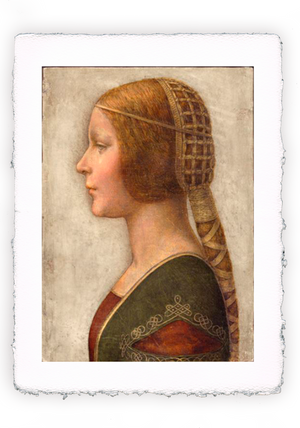
Paul Gauguin, exotic by necessity

Paul Gauguin was born in Paris in 1848 in Montmartre. For a painter it is the right place at the right time.
Ironically, Paul will find posthumous fame for his exoticism and his paintings celebrating primitive life on distant islands.
Since childhood, Gauguin's life has been a whirlwind of travel, works, displacements, changes of direction and almost daring events. The only relatively quiet period was childhood, where the loving maternal care built an idyllic comfort for little Paul.
In his studies, Gauguin was disappointing to say the least. He didn't even have a clue about "what to do when I grow up". Failing the Naval Academy exam, he embarked as a student on a merchant ship and traveled the world. On his return to France he no longer found his mother, who died during his journey, but the bloody Franco-Prussian war.
Paul fought valiantly for his country. Gustavé Arosa, the last companion of Gauguin's mother, was Paul's tutor. Arosa was a big shot in finance and an art collector and recommended Paul to the Bertin exchange agency which employed him as a clerk.
After 24 years of existential turmoil, Gauguin experienced a period of bourgeois tranquility thanks to his work as a "financial consultant". He married a Dane and started a family. He became an art collector by investing his money in works by the Impressionists.
There is still no trace of Gauguin as a painter. Knowing Pissaro and Degas here is the contagion. He learned the first rudiments from them and painted the first pictures. Contrary to usual, critics praised Gauguin's works in the Courbettian style, tepidly.
That was enough to bring Paul's self-esteem to the stars: his vocation was painting. His wife kept him in order by preserving his job, but the collapse of the Union General caused Gauguin to be fired.
Gauguin then decided to make a living by selling his paintings.
Paul's character was a mixture of naivety, opportunism and irresponsibility: he had no clear ideas. Strength game that soon found himself with water in his throat.
The plunging lifestyle prompted his wife to return to her father's home in Copenhagen. Gauguin decided to take advantage of the opportunity and followed it, but there was no mention of selling paintings. He attempted to trade in waterproof sheets, but here too he failed.
He left Denmark and, as mentioned, began a wandering period between Paris, Panama (as a digger worker), stays in the exotic islands with fourteen-year-old wives, in a vicious tour with little construct.
Even the time spent with Van Gogh it had very little of "pictorial". Gauguin accepted because Theo, the very affectionate brother of Van Gogh, paid him very well.
Even in painting Paul's style changes according to friendships and convenience. Attracted by the “cloisonnisme”, he absorbed its forms: areas of flat color divided by well-marked dark contours (such as windows).
The last "Polynesian" period gave us the paintings we know best, rich in color and, for the time, an attractive novelty.
The news of the death of his daughter Aline (had by his first wife) and the death, when he was only one year old, of the daughter he had with his last 14-year-old partner Pahura destroyed his soul. Alone, tired, inconclusive at all, he attempted suicide with arsenic. He missed the dose and even that didn't succeed.
From this period the monumental painting: “Where we come from, who we are, where we go"(In the photo of the post) of 140 cm by almost 4 meters.
Moving to the Marquesas Islands, he attempted a fiscal revolt by the natives towards the colonial authority which cost him a sentence of 3 months in prison.
But he never served his sentence. He was found dead lying in his bed struck down by syphilis. The tomb was forgotten and found 20 years later.
Yet, with such a life, Gauguin must be recognized as having an inexhaustible vital impulse. The same ideal vitality that he deposited in his paintings.


Leave a comment